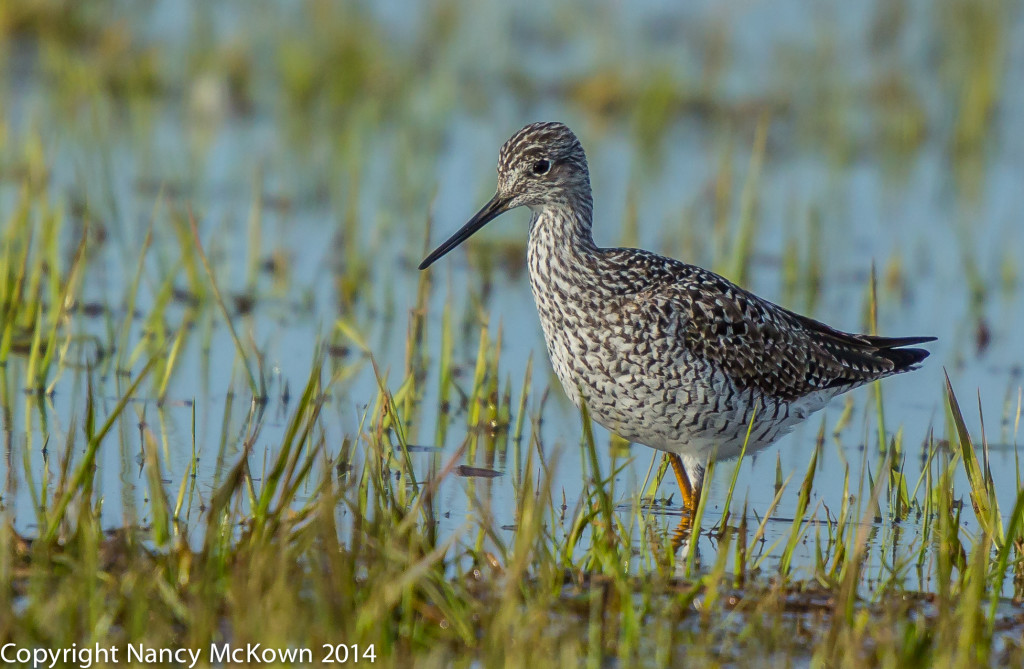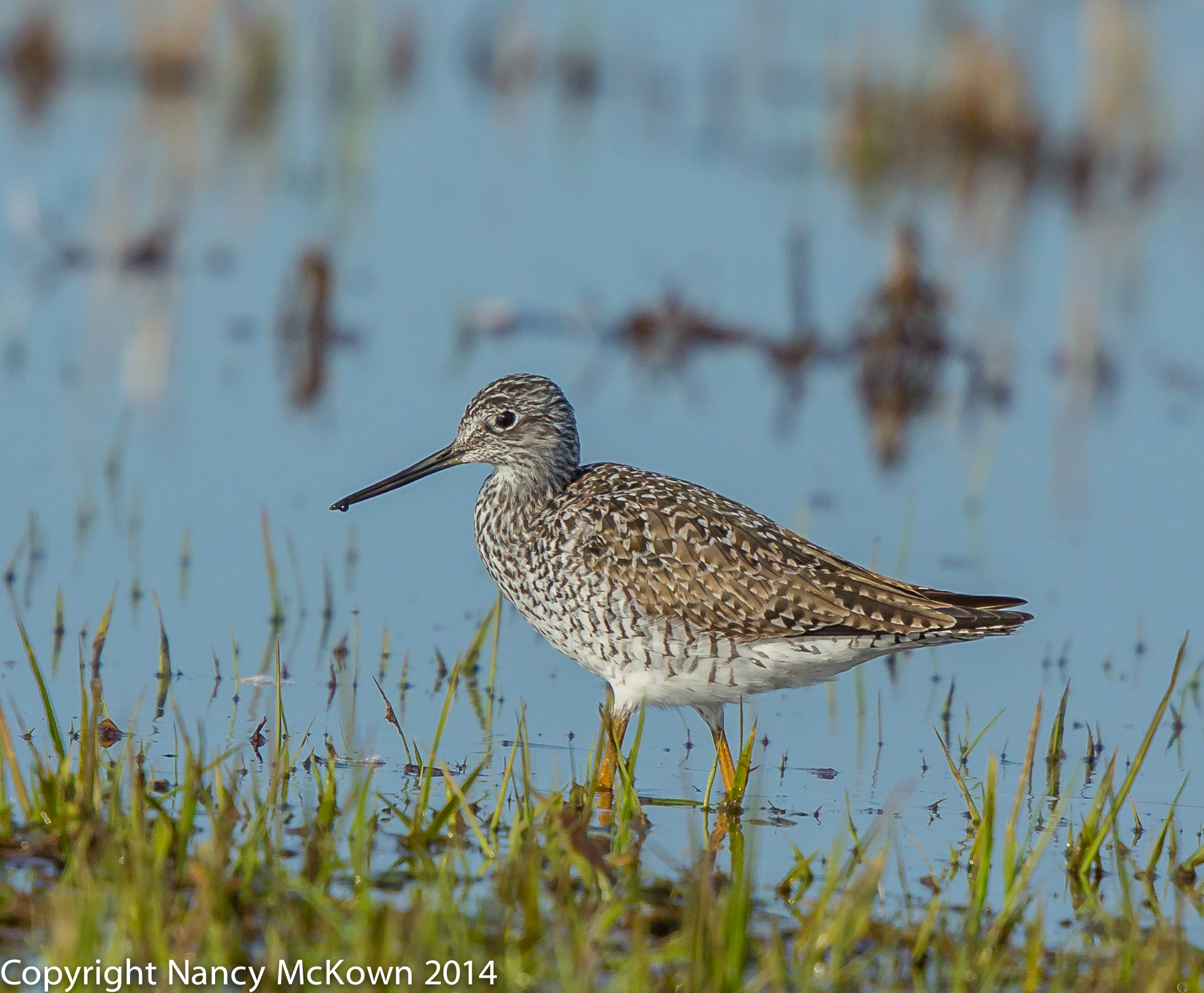March and April Migratory Visitors
We’ve been birding almost exclusively in the western portion of the Allegan State Game Area this spring, hoping to find a wide assortment of migratory birds. We were not disappointed. The Todd Farm, a designated wildlife refuge in the game area, consists of fields, forests, ponds and prairie habitats that are maintained by the DNR. 136 bird species are known to nest in the Allegan SGA. Countless others that do not nest in Michigan use the wildlife refuge as a stopping point on their migratory journey. In early spring, the Allegan SGA is a welcoming place for migratory birds and bird photographers.

ISO 800; f/9.0; 1/2000 Second
Sandpiper Passing Through
The Greater Yellow Legged Sandpiper is one breed of wading birds that stops to rest and replenish at the Allegan SGA’s many ponds. They breed in Alaska and Canada and winter along both the Atlantic and Pacific coasts and throughout Mexico and the Caribbean. Quite a long migration path.
Bursting to Capture Action
I am always pleased when I am able to photograph a bird lifting off into flight. It’s a rare capture, at least for me. Birds are unpredictable in their movements. When I sense that critical action is imminent, I hold down that shutter, continuously shooting in an effort to capture action at its peak. But then, the camera stops. Why?
It works like this. After the shutter is pressed, it takes only seconds before the file is transferred from the sensor to the holding buffer and then to the memory card. If multiple photos are taken in rapid succession, the pipeline between the sensor, holding buffer and memory card will soon reach capacity. The camera will then shut down temporarily until the memory card has time to load all the data from the buffer.
Photographers should be aware of the “burst rate” of their cameras, or how many frames per second the camera can successfully shoot in rapid succession. The burst rate of your camera depends primarily on 3 things.
Factors that Affect Burst Rate of Your Camera
- The processing power of your camera. (Modern DSLR cameras are sophisticated computers – and a faster processor costs more money.)
- File size (how much data is transferring). If you set your camera to shoot and then store large RAW files, or RAW files and JPG files simultaneously, it will not take long to overload the camera. The burst rate on my camera is 6-7 RAW images. After that, it will shut down temporarily to give the storage process time to catch up.
- Writing speed of your memory cards as data is being transferred in the camera.
Overall, you will get more shots in and possibly avoid a camera shutdown if you configure the camera to take smaller size RAW files or JPG files and if you buy high quality memory cards with faster writing speeds.

ISO 800; f/8.0; 1/2000 Second
Birds Migrating Through the Allegan SGA
Besides the Greater Yellow Legged Sandpiper, we’ve seen and sometimes photographed the following migratory birds just passing through the Allegan State Game Area, bound for their nesting grounds.
- Northern Shrike (Nesting grounds in the Canadian Tundra)
- Snow Bunting (Nesting grounds in the Canadian Tundra)
- Horned Lark (Nesting grounds in Northwest U.S)
- Lapland Longspur (Nesting grounds in the Canadian Tundra)
- Rough Legged Hawk (Nesting grounds in the Canadian Tundra)
- Northern Shoveler (Nesting grounds in Western US and Western Canada and Alaska)
- Bufflehead (Nesting grounds in Canada)
- Common GoldenEye (Nesting grounds in UP, Alaska and Canada)
- Ringneck Duck (Nesting grounds in Canada and Alaska)
- RedBreasted Merganser (Nesting grounds in UP, Canada and Alaska)
- Snowy Owls (Nesting grounds in the Arctic Circle)
- American Wigeon (Nesting grounds in Canada and Alaska)
- Brown Creeper (Nesting grounds Northern MI, Canada and New England)
Hopefully we will be lucky enough to find and photograph more bird species this Spring as they pass through Michigan.










good catch nanc! I look forward to seeing what you found today. what a great spring day for discovery!